Iran's nuclear program has no peaceful justification, US tells IAEA
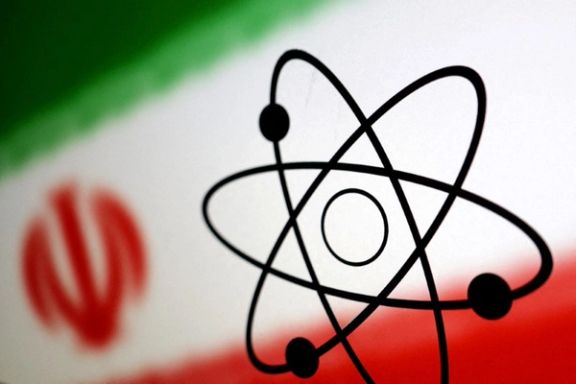
Lacking any credible peaceful purpose, Tehran's expanding nuclear program blatantly defies international concerns, the latest US mission statement to the UN nuclear watchdog warned.

Lacking any credible peaceful purpose, Tehran's expanding nuclear program blatantly defies international concerns, the latest US mission statement to the UN nuclear watchdog warned.
“Iran continues to move further in the wrong direction. Iran continues to expand its nuclear program, to install additional advanced centrifuge cascades, and to produce highly enriched uranium for which it has no credible peaceful purpose,” US Ambassador Laura S.H. Holgate told the IAEA Board of Governors.
The statement stressed that the Islamic Republic of Iran is continually expanding its nuclear program by installing additional cascades of advanced centrifuges and producing highly enriched uranium. "Indeed, Iran’s production of 60 percent enriched uranium runs counter to the behavior of all other non-nuclear weapons states party to the NPT,” the statement said.
Confidential IAEA reports reviewed by Reuters on September 3rd indicate that Iran is persisting with its high-level uranium enrichment program, which could be utilized for the production of nuclear weapons. These reports stressed that despite all concerns, Tehran has increased its stockpile of highly enriched uranium.
Western countries have long argued that there is no civilian justification for Iran to enrich uranium to such a high level.
On the same day the US delivered its latest statement, Russia's Permanent Representative to international organizations in Vienna, Mikhail Ulyanov, remarked at the IAEA Board of Governors meeting that "if the JCPOA were fully implemented, almost all of the existing concerns about Iran's nuclear program would have been resolved." Ulyanov asserted that the failure to fully implement the agreement was a consequence of the policies adopted by Western countries, particularly the US.
Earlier, Rafael Grossi, the Director General of the IAEA, also highlighted during a meeting of the IAEA Board of Governors that Iran's stockpiles of enriched uranium at 20% and 60% levels continue to grow. He further noted that the Agency does not have adequate information about the production and inventory of centrifuges in Iran.
He noted that the Islamic Republic has also increased the number of cascades used for UF6 enrichment.
According to Grossi's report, the IAEA has lost continuity of knowledge about the production and inventory of centrifuges, rotors, and diaphragms, as well as heavy water and uranium ore concentrate in Iran.
In 2021, the Islamic Republic ceased fulfilling its nuclear commitments under the JCPOA, including the provisional application of the Additional Protocol. Since then, the IAEA has been denied supplementary access in Iran.

Twenty-three years after the world was shaken by devastating Islamic terrorist attacks in the United States, it's challenging to view the current Middle East crisis as a direct outcome of that "day of infamy," to quote President Franklin D. Roosevelt.
September 11 is far from forgotten, but its aftermath is often viewed through the lens of the wars in Afghanistan and Iraq. What is frequently overlooked is how these costly and traumatic conflicts, and the geopolitical shifts they triggered, have shaped the current regional dynamics. Today’s complex Middle East quagmire, heavily influenced by Iran’s growing support for various actors, can be traced back to the ripple effects of those wars and the changes they imposed on the region’s power structure.
As hijacked airliners struck New York’s twin towers and the Pentagon, killing thousands, Americans united with a strength not seen since World War II. The global community rallied behind the United States, even supporting its swift invasion of Afghanistan to root out the terrorists responsible for the attacks. This unprecedented unity reflected the world’s collective resolve in confronting the threat of terrorism in the immediate aftermath of September 11.
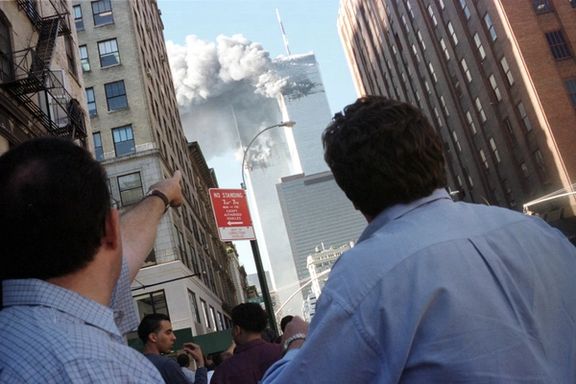
But the ill-planned 2003 invasion of Iraq opened the floodgates to an Iranian expansion few could have imagined on September 10, 2001, when Saddam Hussein still controlled Iraq, practically begging Washington to be left alone and promising to behave. Disregarding the looming dangers of unintended consequences, the Bush administration relentlessly shoveled coal into the furnace of a reckless train, charging toward disaster in the region.
The Iraqi invasion badly damaged the US image among the Arabs, especially that the original excuse for the war, the alleged existence of Iraqi weapons of mass destruction proved false. This fueled a chain of events that allowed Iran to step into the power vacuum left by Saddam, reshaping the Middle East in ways no one foresaw. Meanwhile, the unending war in Afghanistan also sapped resources and focus, perhaps diverting attention from Iran's regional plans, while two simultaneous wars undoubtedly did not help the United States.
A few months after the invasion, signs began to emerge that Iran’s Islamic regime was beginning to build influence among Shiites in Iraq and even assisting the growing Sunni insurgency against the United States.
As the Taliban once famously said, “You may have the watches, but we have the time,” the Iranians began experimenting with a model of proxy warfare that today has brought the region to a new phase of instability, war and the partial closure of the Red Sea to a significant portion of world shipping.
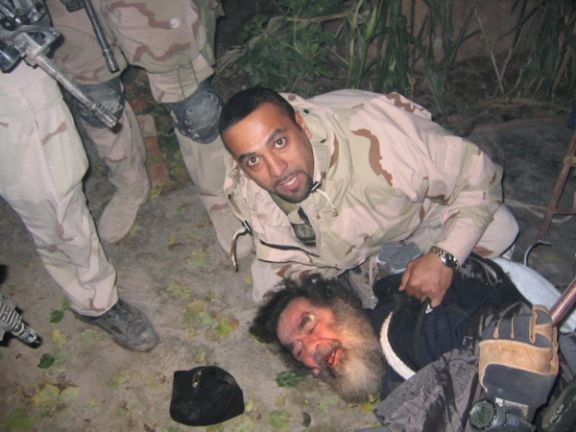
As the US withdrew its forces from Iraq in 2009, Iran found a wide-open playing field in the country, exerting influence in local politics and becoming a king maker in the fragile and unstable democratic system in Iraq.
The more the region experienced tremors, the more Tehran capitalized on them to expand its influence, forming a Shiite crescent that now stretches to the Mediterranean. The first significant tremor came with the Arab Spring, followed by the outbreak of popular protests against Bashar al-Assad in Syria. Tehran quickly stepped in, pledging military support to Assad in suppressing the growing rebellion, largely driven by the Sunni majority. By 2011, Iran was fully committed to the Syrian conflict, sending its Revolutionary Guard as "advisors" and organizing Iraqi, Afghan, and other forces to serve as foot soldiers in the brutal civil war. From 2011 to 2014, Iran’s involvement deepened, establishing a crucial foothold in Syria’s devastating conflict, all in an effort to safeguard Assad’s regime and expand its regional influence.
Meanwhile, the United States focused on diplomacy and sanctions aimed at curbing Iran's nuclear ambitions and fought ISIS in Iraq, without responding decisively to developments in Syria. Russia capitalized on the situation, deploying its forces to support Iranian efforts to crush the Syrian rebels. By the time former President Donald Trump partially reversed U.S. policy and took a tougher stance on Tehran, Syria was largely pacified, solidifying Iran’s Shiite crescent of influence extending to the Mediterranean.
During a brief period, following Trump’s “maximum pressure” sanctions and the January 2020 killing of Qasem Soleimani, Tehran's threat appeared to diminish. However, the situation shifted when President Joe Biden initiated new nuclear talks. Although these efforts ultimately proved futile, the US had already relaxed sanctions, allowing Iran to export nearly 1.5 million barrels of oil per day to China. Additionally, just before Hamas's October 7 attack on Israel, Washington unfroze around $16 billion in Iranian assets, further loosening financial constraints on Tehran.
This has sparked criticism that the Biden administration indirectly enabled Iran’s support for the October 7 attack. While there may be some truth to this, one could argue that the roots of the October 7 incident trace back to earlier events—9/11 and the 2003 invasion of Iraq. These pivotal moments set the stage for the ongoing instability in the Middle East, with Iran gradually expanding its influence over the years.
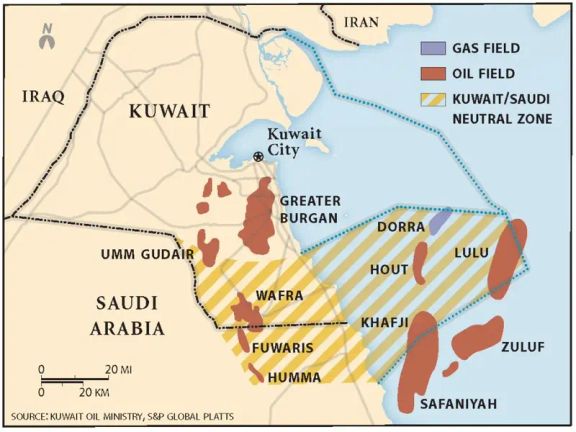
In a new twist in the diplomatic standoff over the Arash field, a top Iranian Islamic Revolutionary Guard general claims Kuwait has begun exploiting disputed oil and gas reserves in the Persian Gulf.
Abdolreza Abed, the commander of the IRGC's Khatam-al Anbiya Construction Headquarters told domestic reporters on Tuesday that there is evidence the Kuwaitis created a company to utilize the contested field and a call for tenders has been issued.
"However, they should know that the Arash field is the inalienable right of the Iranian people," Abed said.
The offshore oil and gas field, partly in Kuwaiti and Saudi territorial waters at the northwestern end of the Persian Gulf, is called Al-Durra by Arab countries and Arash by Iran. One part of the field falls also within Iran's territorial waters. The field has been a point of contention and diplomatic disputes among these three countries for decades due to overlapping territorial claims.
In March 2022, Kuwait Petroleum Corporation announced the signing of a contract between Saudi Arabia's energy minister and his Kuwaiti counterpart to develop the Al-Durra field, which is expected to produce one billion cubic feet per day of gas and 84,000 barrels per day of condensates.
Khatam-al Anbiya, Iran’s major engineering and construction conglomerate, belongs to the IRGC and frequently secures large government contracts without competitive bidding, fueling accusations of corruption, favoritism, and monopolization. Sanctioned by the US and EU for supporting the IRGC's ballistic missile program and regional military operations, it is also criticized for exploiting Iran's oil and gas resources to benefit the IRGC rather than the broader economy, with controversial involvement in projects like the South Pars gas field.
According to state media, Iran’s Foreign Ministry spokesman Nasser Kanaani on Tuesday reportedly called for a return to negotiations and bilateral dialogue to reach an agreement between the neighbors.
Seemingly in response to the latest news, Heshmatollah Falahatpisheh, a former member of the National Security Commission of the Iranian Parliament tweeted out his take on the issue. In a post on X, he wrote that "The Arabs' claim today about #Arash and #IranianIslands is the flip side of the #Zangezur coin—a counterfeit coin", implying that Arab claims over the Arash field and Iranian islands are viewed as baseless, similar to disputes over the Zangezur region between Armenia and Azerbaijan.
Falahatpisheh’s post also referenced that Iran's current trajectory of political isolation and unresolved major disputes is encouraging smaller regional actors to challenge its positions, leading to more complex and multifaceted conflicts.
In August, Abed had also challenged Saudi Arabian and Kuwaiti claims that the field, off Kuwait’s coast, is within their territorial waters, saying that “Iran's entry into the Arash field is more essential than daily bread.”
At that time, reports suggested Kuwait and Saudi Arabia had invited the Islamic Republic to negotiate over their territorial borders in the region.
The field was discovered in 1967 with an estimated 310 million barrels of oil and 20 trillion cubic feet of gas. Iran, claiming 40% of the field lies in its waters, argues that development without its consent violates international law, however it is not clear if it has the technical ability to explore the underwater field. Kuwait and Saudi Arabian can extract oil and gas from their undisputed sector, leaving Iran to do what it can in the its northern part.
Iran's main South Pars gas field in the Persian Gulf is shared with Qatar, but each extracts gas in its own sector.
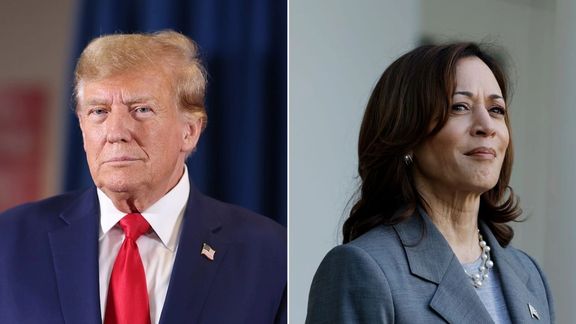
In their first presidential debate, former President Donald Trump and Vice President Kamala Harris not only traded barbs but also revealed their sharply contrasting approaches to handling Iran and Middle Eastern conflicts.
Though each candidate only briefly touched on Iran, it was enough to reveal their contrasting strategies. Their differing approaches offered a stark choice: a return to Trump’s hardline tactics from his first term, centered on maximum pressure and sanctions, or a continuation of Biden’s strategy, which seeks to balance pressure with diplomatic engagement in managing Tehran.
In the debate, Vice President Harris stressed the importance of remaining vigilant against Iran's destabilizing activities in the region, although she did not clarify her specific position on sanctions against Iran. She reaffirmed her commitment to Israel's security, stating, “I will always give Israel the ability to defend itself, in particular as it relates to Iran and any threat that Iran and its proxies pose to Israel,” when addressing the ongoing Israel-Hamas conflict.
Trump, on the other hand, directly linked the improvement in Iran's financial situation and its support for regional terrorism to the Biden administration's decision to be lax about enforcing sanctions. While he did not mention Biden by name, Trump made it clear that he holds the current administration's actions responsible for Iran’s financial comeback. He argued, "Iran was broke under Donald Trump. Now Iran has $300 billion because they took off all the sanctions that I had..."
Though experts largely agree that Trump’s “maximum pressure” strategy significantly weakened Iran's economy and curtailed its ability to fund terrorist groups, his claim that Iran now has $300 billion is widely viewed as a substantial overstatement.
In 2023, the Foundation for Defense of Democracies estimated that Iran’s increase in oil exports since President Biden took office has netted the country an additional $32 billion to $35 billion.
Nonetheless, Trump placed the blame squarely on the Biden administration—and by extension, Harris as Vice President—for the chaos in the region and Iran's renewed ability to fund its proxy militias. He argued that the Biden administration's policies have directly fueled this resurgence. “Iran had no money for Hamas or Hezbollah or any of the 28 different spheres of terror... Now they're a rich nation. And now what they're doing is spreading that money around. Look at what's happening with the Houthis in Yemen. Look at what's going on in the Middle East. This would have never happened,” Trump stated during the debate on Tuesday night.
During Biden's presidency, Iran boosted oil exports to China from a low of 250,000 barrels per day to as high as 1.5 barrels by 2024.
While Trump recently claimed he does not seek outright hostility with Iran, he has made it clear that he will not permit the country to develop nuclear weapons. In an interview with Fox News, Trump warned, "If Iran acquires nuclear weapons, Israel is gone. It will be gone," underscoring the high stakes he attaches to preventing Iran from becoming a nuclear power.
Trump and other Republicans have criticized the Biden administration for being too lenient on Iran, allowing it to circumvent US economic sanctions. They argue that this leniency enabled Tehran to arm Hamas, facilitating the October 7 attack on Israel.
During the debate, Trump went – characteristically – on the offensive, accusing Harris of being anti-Israel and pointing to incidents like her alleged refusal to meet with Israeli Prime Minister Benjamin Netanyahu. He painted a dire picture of her leadership, claiming it would spell disaster for Israel and potentially lead to its destruction. Positioning himself as Israel’s unwavering ally, Trump framed Harris and the Biden administration as threats to the nation's security and survival.
In response, Harris firmly rejected Trump’s claims, in turn claiming that she has been a long-standing support for Israel throughout her career and dismissing his accusations as baseless smears designed to deflect from his own foreign policy blunders. She sharply criticized Trump as “weak and wrong on national security and foreign policy,” calling out his admiration for dictators and his inconsistent strategies. "It is very well known that Donald Trump is weak and wrong on national security and foreign policy... And that is why we understand that we have to have a president who is not consistently weak and wrong on national security," Harris asserted.
Harris reinforced her stance by affirming Israel’s right to self-defense while advocating for a more comprehensive peace strategy—one that also recognizes Palestinian security and self-determination through a two-state solution.
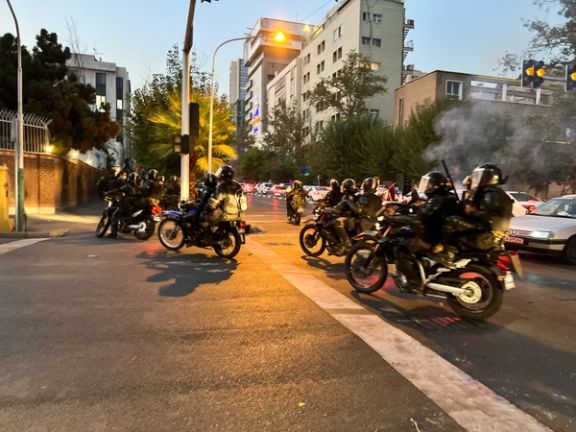
In spite of global sanctions and global condemnation, two years after Iran’s Woman Life Freedom uprising, “impunity for crimes reigns supreme”.
The report from Amnesty International says “people in Iran continue to endure the devastating consequences of the authorities’ brutal crackdown on the Woman Life Freedom uprising amid systematic impunity for crimes under international law.”
This is in spite of the likes of the EU, US and UK imposing yet further sanctions on Iran for its rights abuses, alongside those in place for its nuclear program and and support for Russia’s war on Ukraine.
The statement comes on the eve of the two year anniversary of the uprising sparked by the death in morality police custody of Mahsa Amini, arrested for not wearing her Islamic head covering correctly.
It since sparked nationwide protests and the government has imposed even tougher measures against hijab rebellion in addition to a wave of executions.
“No effective, impartial and independent criminal investigations have taken place into the serious human rights violations and crimes under international law by Iranian authorities during and in the aftermath of the nationwide protests of September-December 2022, including security forces’ extensive and unlawful use of force and firearms,” Amnesty said, over 550 civilians killed during the protests by Iran’s security forces.
“Security forces fired assault rifles, shot guns loaded with metal pellets and
teargas canisters, and severely beat protesters with batons, resulting in the unlawful killing of hundreds of protesters and bystanders, including scores of children, and life-changing injuries to many more,” its investigation concluded.
In addition, Amnesty highlighted the crackdown on families of protesters as the authorities have sought to silence relatives seeking truth and justice for the unlawful killings of their loved ones through “arbitrary detention, unjust prosecution, death threats and other relentless harassment”.
Women and girls continue to be violently arrested by morality police, which has seen deaths including 16-year-old Armita Geravand.
“Two years on, the authorities have also further escalated their assault on human
rights, waging a “war on women and girls” through an increasingly violent crackdown on those defying draconian discriminatory compulsory veiling laws and have intensified their use of the death penalty to silence dissent,” the report said.
Amnesty spoke of the Noor Plan launched in April to target mass hijab rebellion. It has seen “a visible increase of security patrols on foot, motorbikes, car and police vans in public spaces to enforce compulsory veiling” by Iran’s security apparatus.
It has also led to “dangerous car chases to stop women drivers on the road, mass confiscation of their vehicles, imprisonment, as well as flogging and other penalties amounting to torture and other cruel, inhuman or degrading treatment or punishment,” Amnesty noted.
Last month, a video circulated on social media showed multiple agents violently assaulting two 14-year-old girls who had removed their headscarves.
Executions have soared. Last year, it was revealed that Iran executed over 850 people as it cracked down on dissent, with hundreds more killed this year as the authorities “resorted to use of the death penalty as a tool of oppression to terrorize the public”, the report added.
It noted the disproportionate number of executions of Baluchis as the ethnic minority is particularly targeted by the government.
In addition to those killed for protesting, over a dozen people remain at risk of execution or being sentenced to death in connection with the protests.
“Over the past two years, the authorities have continued to deny that officials
subjected those detained during the protests to torture and other ill-treatment,
including rape and other forms of sexual violence,” Amnesty’s report said, including children as young as 12.
In March 2024, the High Council for Human Rights of the Islamic Republic of Iran,
which is not an independent body and sits within the judiciary, responded to Amnesty International’s investigation stating that Iran’s judiciary had investigated complaints and “found that in 28 out of 31 provinces, no complaints were filed under the headings of rape, assault and sexual harassment” as the government continues to deny the gravity of the situation.
In April, the UN Human Rights Council extended the mandate of the UN Fact-Finding Mission on Iran (FFMI) “but Iranian authorities persist in refusing to cooperate with the independent body and deny its members access to the country,” Amnesty wrote.
It had similarly put up obstacles to the UN’s nuclear inspectors as the veil of secrecy continues to shroud Iran, making justice for the country’s people ever more elusive.
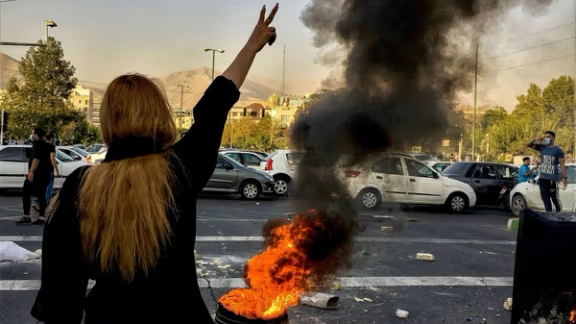
On the second anniversary of Iran's sweeping anti-regime protests, a new report by two rights groups calls for urgent international intervention to protect Iranian artists who face severe repression for their creative dissent.
Compiled by the Artistic Freedom Initiative (AFI) and Voices Unbound (VU), the 100-page document urges the global community to recognize art as a form of political resistance and to take immediate steps to safeguard artists facing persecution.
Despite condemnation from the international community, the report says dozens of Iranian artists are serving prison terms, and some face execution as a direct result of their creative work.
The protests in Iran, sparked by the death of 22-year-old Mahsa Jina Amini in September 2022 after being detained by the so-called morality police for allegedly wearing "improper hijab," quickly escalated into a nationwide uprising.
The "Women, Life, Freedom" movement, as it became known, saw Iranians from across the country calling for regime-change and voicing their opposition to systemic discrimination, repression, and violence by the Iranian state.
Tehran, in turn, responded with a brutal crackdown, imprisoning tens of thousands of protestors on arbitrary grounds to punish them for their participation and discourage them from taking part in future protests. Hundreds were killed in the security apparatus’ efforts to stifle protests.
While several previous publications have documented the widespread human rights abuses committed by Iranian authorities, this new study shifts the focus to the central role of art and artists in political resistance.
Although artists like renowned rapper Toomaj Salehi have long been targets of state persecution, the analysis reveals that the regime has intensified its tactics, imposing severe censorship, imprisonment, and even torture on those who dare to express dissent.
By presenting comprehensive accounts from artists, the document illuminates the critical role many played in amplifying the voices of the 2022-2023 protests through their creative work and exposes the legal mechanisms used by Iran's judicial system to suppress dissent.
While providing new insights into how these legal tools are systematically used to suppress artistic expression and silence opposition, the report also provides a comprehensive analysis of how the Iranian government has systematically targeted artists who supported the movement.
It reveals the various tactics used by the regime, such as censorship, surveillance, arbitrary arrests, forced confessions, travel bans, and extraterritorial repression, to silence these artists. This highlights a pattern of suppression specifically aimed at controlling artistic expression, which the report argues is a form of resistance in Iran's repressive environment.
The report draws on interviews and testimonies of artists like Zhinos Taghizadeh, Nazanin Nourozi, and Yalda Moaiery who have experienced censorship, exile, and prosecution.
Moaiery, a photojournalist, was detained while capturing images at one of the initial Woman, Life, Freedom demonstrations in September 2022.
Moaiery told AFI and VU that she was given no explanation for her arrest. After being identified by police officers while she was in prison, Moaiery was separated from the other women protestors and placed into solitary confinement for extended periods. Moaiery, who is currently in the US, explained that she had been arbitrarily detained and tortured by authorities several times throughout her career prior to this instance, and that the experience of being subjected to solitary confinement continues to weigh heavily on her mental and emotional health.
In urging a redefined understanding of artistic expression as a significant form of political dissent and its critical role in the “Women, Life, Freedom" protest movement, the report and several contributors call on the international community to take urgent action to support Iranian artists under threat.
They call for the provision of more resources for legal aid, creating safe haven and immigration pathways, amplifying their voices globally, and imposing targeted sanctions on those persecuting them.
“The international community must acknowledge the invaluable contributions of Iranian artists as defenders of human rights,” Johanna Bankston, Senior Officer of Human Rights Research & Policy at AFI, said in a press release. “It is imperative to support their courageous efforts and ensure their safety amidst ongoing persecution.”
The report says its recommendations aim to protect artistic freedom and ensure that Iranian artists can continue to resist oppression and share their powerful messages with the world.